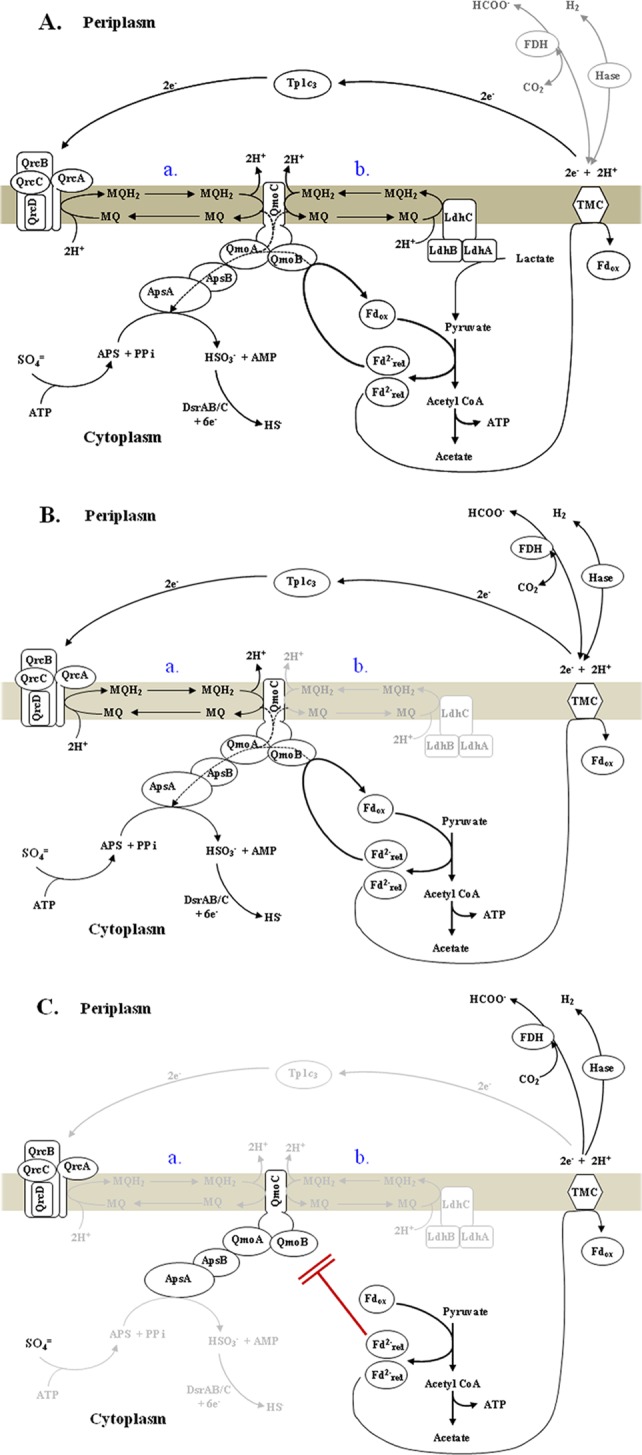FIG 4.

Proposed model of electron flow from lactate by confurcation to APS for sulfite production in D. alaskensis G20 in exponential phase of growth. (A) Wild-type cultures with lactate-sulfate medium where small amounts of reductant appear in hydrogen (8%) and formate (not detected) (Table 2). Menaquinol is produced by either route a or b or both route a and b (indicated in blue) in the model. (B) Wild-type cultures with pyruvate-sulfate medium where small amounts of reductant are produced as hydrogen (9%) and formate (9%). Menaquinol is produced by electrons delivered to the Qrc complex by the TpIc3 by route a. (C) CycA mutant cells with pyruvate sulfate medium unable to generate menaquinol by either route a or b and, therefore, not able to use reduced ferredoxin for reduction of APS. Reductant appears in hydrogen (88%) and formate (12%). In this model, the abbreviation of TMC is used as a generic term for an unidentified transmembrane complex. FDH, formate dehydrogenase; Hase, hydrogenase; MQ, menaquinone; Fd, ferredoxin; PPi, inorganic pyrophosphate.
